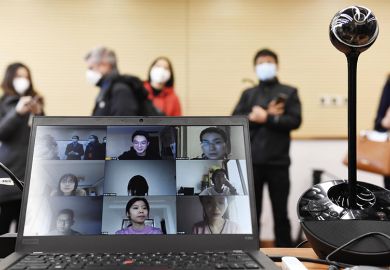Chancellor George Osborne’s compulsory £9 an hour “National Living Wage” by 2020 stole most of today’s Budget headlines.
It will have also sent a lot of university finance directors scurrying to their accounts to see how much it will cost their institutions.
Many will probably reply “not too much” in the very short term, when quizzed about it by their vice-chancellors.
Under Osborne’s plans, the current minimum wage of £6.50 an hour will rise to £7.20 an hour next year for the over-25s.
That rise will not apply to anyone working in higher education who is currently covered by the national pay spine, who will already be paid more than this 2016 minimum.
At present, the lowest hourly wage under the nationally agreed pay scales is £7.67 (based on a 35-hour week), although some universities base their calculations on a 37-hour week, making the hourly rate just £7.25.
As part of this year’s overall 1 per cent pay offer from employers, those on the bottom eight points of the scale will also see their pay rise by up to 2.65 per cent.
That offer was designed to bring all staff up to the Living Wage Foundation’s recommended Living Wage, which is currently £7.85 an hour (ex-London), by August.
Universities seldom use the bottom two points of the scale anyway, so higher education staff are paid far more than this in reality, employers have also argued.
Therefore, the vast majority of the 400,000 or so staff employed directly in higher education are paid comfortably higher than the minimum wage.
But some may well see a rise from Osborne’s plan, in particular those who are not subject to the national pay spine. About two-thirds of universities outsource certain jobs, such as security, catering and maintenance, which are outside this framework.
If those staff are paid in or around the current £6.50 an hour minimum wage, Osborne’s announcement could hit some universities’ balance sheets - although not in the same way as those of large employers such Tesco and Sainsbury's, which are likely to have more staff employed at wages closer to that mark.
Staff in campus cafes and bars may also potentially enjoy a pay rise, but probably not most students working in such places. The new pay rates will apply only to over-25s, with those aged 21 to 24 getting a minimum wage of £6.70 an hour next year.
However, when the £9 an hour rate comes in, it may prove far more challenging to institutions, who are already facing much higher pension costs from next year.
Pay rises at the bottom end of the pay scale would then need to rise significantly. At present the bottom seven points on the 51-point national scale are below £9 a hour.
It may also present a major challenge to two of the big efficiency agendas in higher education: shared services and outsourcing.
Universities have been encouraged to club together to run services more efficiently or use subsidiary companies to lower staff costs, which allows them to employ staff at rates below those in the national framework.
With a £9 an hour living wage, can major savings still be found in many of these areas?




